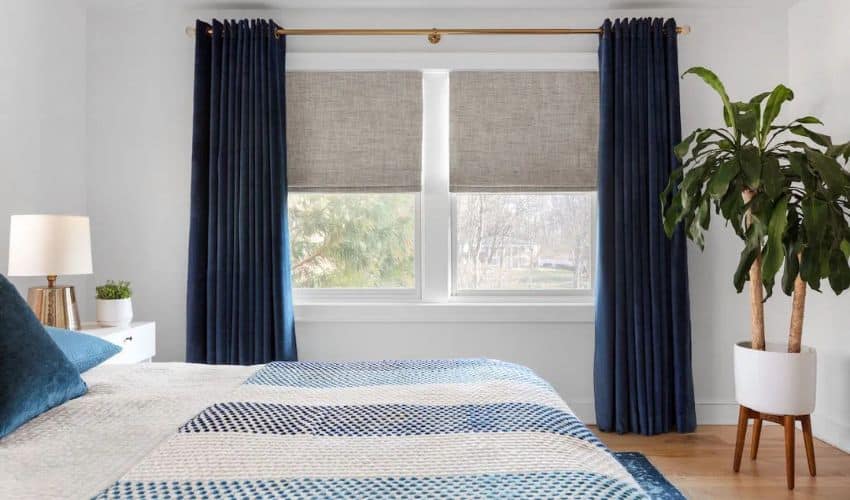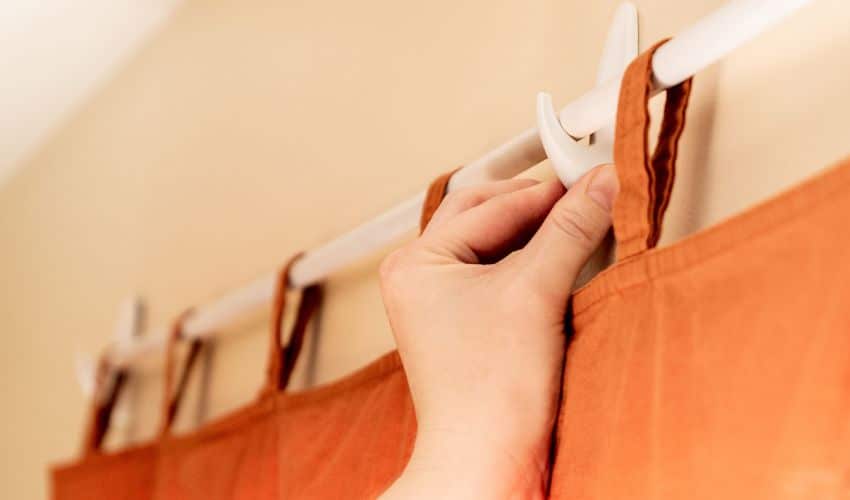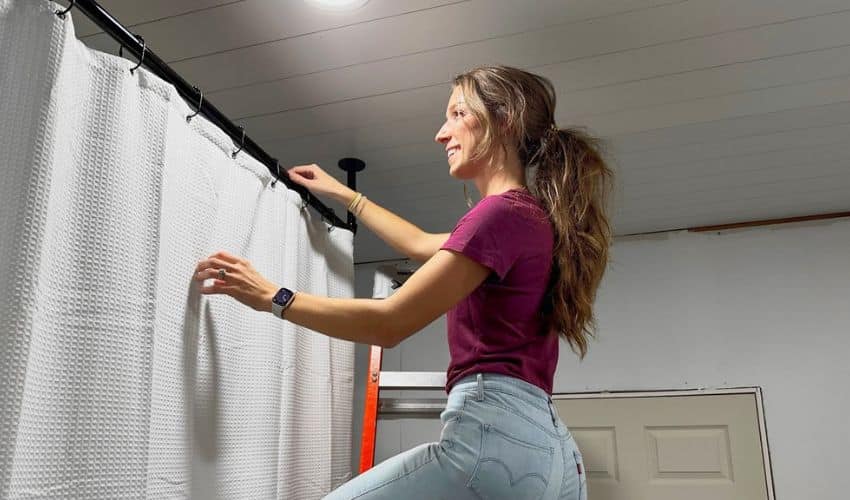As we know, curtains are mainly used to block light. Also, consider providing privacy. If they cannot serve this function. Then what is the purpose of having them? Curtains are not just decorative pieces of fabric hanging to cover a window frame. In this article, you’ll learn about different methods to block light from the top and sides of curtains. By reading further, you will discover effective ways to fix light leakage and make your curtains more functional.
Hacks to Seal the Top Edge and Side Gaps of the Drapes
Many factors contribute to side and top gaps in window hangings. A proper solution is required without damaging the existing curtains. There are several efficient ways, without stitching, that make use of curtain accessories to help block light from the sides and top edges. This way, you can create a light-free environment without any interruptions.
Using Magnetic tapes
One of the practical options for sealing curtain side gaps is to use magnetic strips. First, take the required measurement of the curtain edges according to the wall, cut the magnetic strips, and attach them to one side of the curtain. This is one of the easiest and most affordable DIY solutions.
- Benefit
One of the greatest benefits of using magnetic tapes is that they are lightweight.
They require no drilling or tools for installation.
- Disadvantage
The use of magnetic tapes is limited. Over time, their adhesive may start to peel off.
Another drawback is that they are not suitable for all types of curtains. Further, it may not fully seal larger gaps.
Attaching the Curtains with Sticky Strips
If you’re looking for an affordable solution. Sticky strips are one of the simplest and most budget-friendly options. They firmly secured the edges of the curtain and helped seal them so they stayed in place. With this method, the vertical edges of your curtain panels are attached using adhesive strips.
- Benefits
No tools are required. A great option for rental spaces. Perfect as a DIY project to adjust or alter window curtains.
- Disadvantage
One drawback is that they are not very durable and can weaken over time. In places with high humidity, this method may lose its grip. Also, fail to hold the curtains securely.
Opt for Wider Curtains
This is one of the most effective approaches to minimizing side gaps, instead of replacing or buying new curtains. Simply add 6 to 12 inches of extra fabric. This ensures full coverage. Common curtain hardware, such as standard curtain rods, tracks, or rings, can be used. This way, you can create a clean window setup and reduce light leaks.
- Benefits
Provides a more polished overall design. Offers energy-efficient window treatment. Ensures full window coverage, maximizing room-darkening capacity.
- Disadvantage
One major drawback is the bulky appearance caused by wider curtains. Installation can be more difficult due to the added weight.
Choose Ripple Folds
In the wave-fold curtain design, a track is installed above the window along the ceiling. This allows the curtain to extend. Meanwhile, cover the sides efficiently. With its uniform appearance, you can create ripple-like folds. Ensuring the curtains are evenly distributed when opened or closed.
- Benefits
Provides a gap-free design with excellent coverage. Effectively covers side gaps. Also, securely holds larger or heavier curtain panels.
- Disadvantage
Due to the ripple-fold system, specialized curtain hardware is required. This makes them more expensive than standard curtains. They are less flexible for those who like to swap or change curtains frequently.
Use a Cornice or Pelmet
This method is used at the top of a window to prevent light leakage. The treatment extends several inches beyond the frame. A pelmet is usually made of fabric and decorative materials. A cornice is made of wood or upholstered boards.
- Benefits
Since they are installed at the top of the curtain, they effectively block light from above.
Provide insulation while adding a decorative touch to your window treatment. Help conceal imperfections in curtain hardware.
- Disadvantage
Installation can be costly. Making it less suitable for budget-friendly solutions. They are less flexible. Also harder to swap compared to other options. Proper installation requires precision.
Use a Wraparound or Ceiling-Mounted Curtain Rod
Get full coverage with wraparound ceiling-mounted curtain rods. In this design, heavy or layered curtains can effectively seal side gaps, making them suitable for both traditional and modern interiors. For large windows or sliding glass doors, they are one of the best ways to cover gaps.
- Benefits
Perfect for large gaps, as wraparound and ceiling-mounted rods provide excellent coverage.
- Disadvantage
Require professional installation. Limited in design and flexibility. Difficult to replace once installed.
Adding a Valance
Set a valance right onto the rod pocket, at the top of a window. In this technique, a short length of fabric drapes across blinds, shades, or curtains, serving to minimize light leaks at the top. Valances are installed in various ways: rod-pocket valances, attached valances, or board-mounted valances.
- Benefits
Conceal curtain hardware effectively. Add visual interest with their decorative appeal.
- Diadvantage
Can add bulk at the top of the window and create the illusion of shorter ceilings. Require regular maintenance. Limit design choices, as they are better suited to traditional and formal styles.
Endnote
In this blog, you’ll learn common methods to prevent light from seeping through the top and sides of curtains. Window Curtain Dubai provides some of the best solutions for blocking unwanted light. By using these methods, you can stop light from entering your space. Also, create a more comfortable atmosphere!








